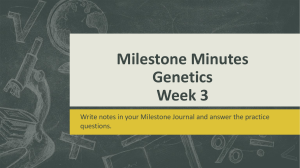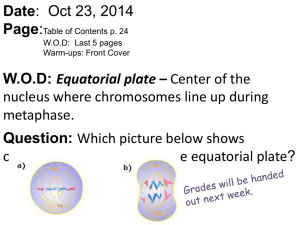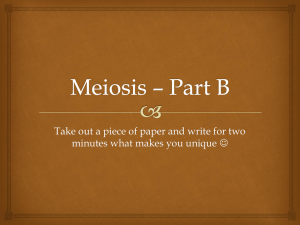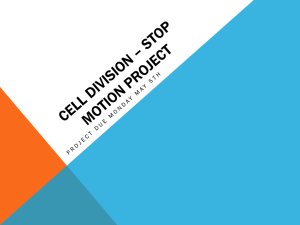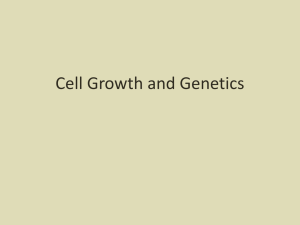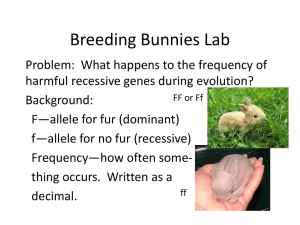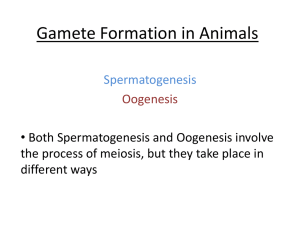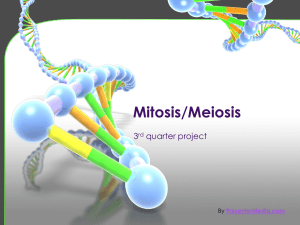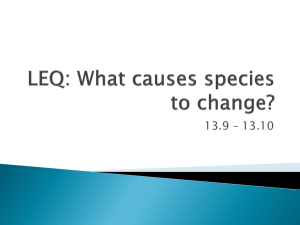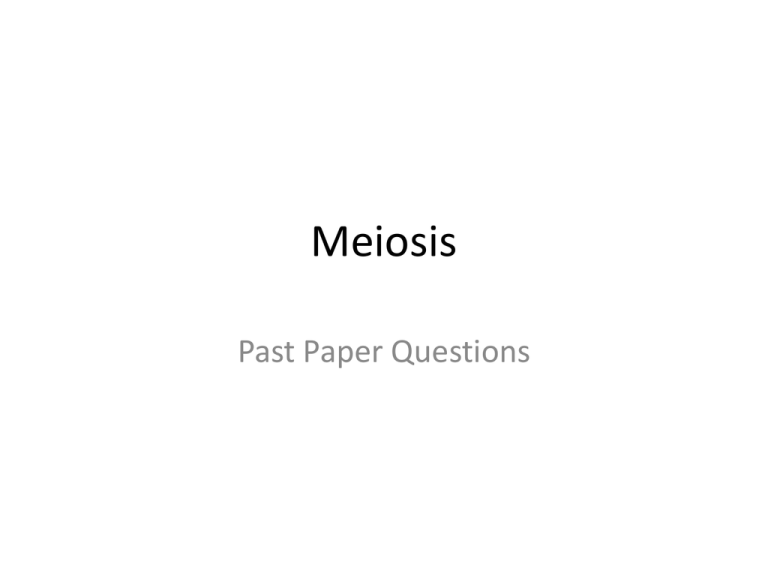
Meiosis
Past Paper Questions
1. Define the terms gene and allele
and explain how they differ. 4 marks
SL
1. Define the terms gene and allele and explain how
they differ. 4 marks
• gene is a heritable factor / unit of inheritance
• gene is composed of DNA
• gene controls a specific characteristic / codes for
a polypeptide / protein
• allele is a form of a gene
• alleles of a gene occupy the same gene locus /
same position on chromosome
• alleles differ (from each other) by one / a small
number of bases(s)/ base pair(s)
2. Describe the consequences of a
base substitution mutation with
regards to sickle cell anemia. 7 marks
2. Describe the consequences of a base substitution
mutation with regards to sickle cell anemia. 7 marks
•
•
•
•
•
•
•
•
•
•
•
•
•
•
the sequence of nucleotide bases in DNA codes for the sequence of amino acids in proteins
DNA is transcribed into mRNA, which is translated into amino acids of protein
normal (ß chain) hemoglobin gene / DNA produces normal (ß chain) hemoglobin protein /
amino acids
substitution= the replacement of one (or more) nucleotide base with another
caused by a copying mistake during DNA replication
as a result of a mutagen / X-rays / chemical / UV radiation / other mutagen
mutation in normal (ß chain) hemoglobin gene alters the sequence of nucleotide bases
normal nucleotide sequence = CTC altered to CAC
resulting in altered mRNA (GAG to GUG) during transcription
resulting in altered sequence of amino acids in (ß chain) hemoglobin protein (glutamic acid to
valine) during translation
causing red blood cells to change shape / sickle under low oxygen conditions
causing sickle cells anemia when two copies of the mutated gene are inherited
producing a sickle cell carrier when one copy of the mutated gene is inherited
sickle cells anemia reduces oxygen flow to organs, leading to their deterioration
3. Outline how the process of meiosis
can lead to Down's syndrome. 4
marks
3. Outline how the process of meiosis can lead to
Down's syndrome. 4 marks
• in metaphase homologs in ceter of cell / spindles
attached
• homologs are separating
• one pair doesn't separate / non-disjunction
• in telophase cells divide into two
• cells have either one more / one less chromosome
• can occur in second division of meiosis
• sister chromatids fail to separate
• fertilization with one gamete / sperm / egg carrying
extra chromosome
• Down's syndrome is trisomy of chromosome 21
4. Karyotyping involves arranging the
chromosomes of an individual into
pairs. Describe one application of this
process, including the way in which
the chromosomes are obtained. 5
marks
4. Karyotyping involves arranging the chromosomes of an
individual into pairs. Describe one application of this process,
including the way in which the chromosomes are obtained. 5
marks
• application of karyotyping {2 max}
• find gender / test for Down's syndrome / other chromosome abnormality
• identify sex chromosomes / numbers of chromosome 21 / other
chromosomes counted
• XX = female and XY = male / third chromosome 21 indicates Down's
syndrome / other chromosome abnormality (e.g. Klinefelter's syndrome)
• obtaining chromosomes {3 max}
• fetal cells obtained from amniotic fluid / amniocentesis / other named
source
• white blood cells obtained
• cells encouraged to divide
• cells accumulated / blocked in metaphase
• prepare slide / chromosomes examined
5. Compare the processes of mitosis
and meiosis. 6 marks
5. Compare the processes of mitosis
and meiosis. 6 marks
answers must be pair-wise comparisons to receive any marks.
• Mitosis: one cell division & Meiosis: two divisions / reduction division
• Mitosis: chromosome number does not change & Meiosis: converts diploid to haploid cells
• Mitosis: products genetically identical & Meiosis: products genetically diverse
• Mitosis: separation of sister chromatids in anaphase & Meiosis: separation of homologous
chromosomes in anaphase I and sister chromatids in anaphase II
• Mitosis: no crossing over & Meiosis: crossing over in prophase I
• Mitosis: no formation of tetrads / no synapsis & Meiosis: formation of tetrads / synapsis
• Mitosis: produce cells for growth/repair/asexual reproduction & Meiosis: produce sexual cells
/ gametes for sexual reproduction
• Mitosis: two cells produced & Meiosis: four cells produced
• Mitosis: daughter cells with both copies of chromosomes/random assortment does not occur
& Meiosis: random assortment of maternal/ paternal chromosomes
• Mitosis: replication of DNA in interphase & Meiosis: replication of DNA in interphase I
• Mitosis: four phases: prophase, metaphase, anaphase, telophase & Meiosis: same four
phases twice
6. Outline one example of inheritance
involving multiple alleles. 5 marks
6. Outline one example of inheritance
involving multiple alleles. 5 marks
• multiple alleles means a gene has three or more alleles / more than
two alleles
• ABO blood groups / other named example of multiple alleles
• ABO gene has three alleles / equivalent for other example
• IA IB and i shown (at some point in the answer) / equivalent for
other example
• accept other notation for alleles if clear
• any two of these alleles are present in an individual
• homozygous and heterozygous genotye with phenotypes (shown
somewhere)
• all six genotypes with phenotypes given (shown somewhere)
• example / diagram of a cross involving all three alleles
7. Outline sex linkage. 5 marks
• gene carried on sex chromosome / X chromosome / Y
chromosome
• inheritance different in males than in females
• males have only one X chromosome therefore, only one
copy of the gene
• mutation on Y chromosome can only be inherited by males
• women can be carriers if only one X chromosome affected
• example of sex linked characteristics (e.g. hemophilia /
color blindness)
• example of cross involving linkage
8. Explain, using a named example,
why many sex-linked diseases occur
more frequently in men than women.
9 marks
8. Explain, using a named example, why many sexlinked diseases occur more frequently in men than
women. 9 marks
•
•
•
•
•
•
•
•
•
•
•
•
•
named example of sex-linked disease
caused by recessive allele
on the X chromosome
example of pair of alleles (e.g. X H and X h) (reject if alleles do not
correspond)
females are XX and males are XY
females have two alleles of the gene and males have only one
allele causing the disease is rare / uncommon
probability of femles inheriting rare allele twice as low
calculation of squaring the gene frequency
female would have to inherit the allele from her father
who would have suffered from the disease
so females can carry the gene but still be normal
but males (with the gene) will have the disease

